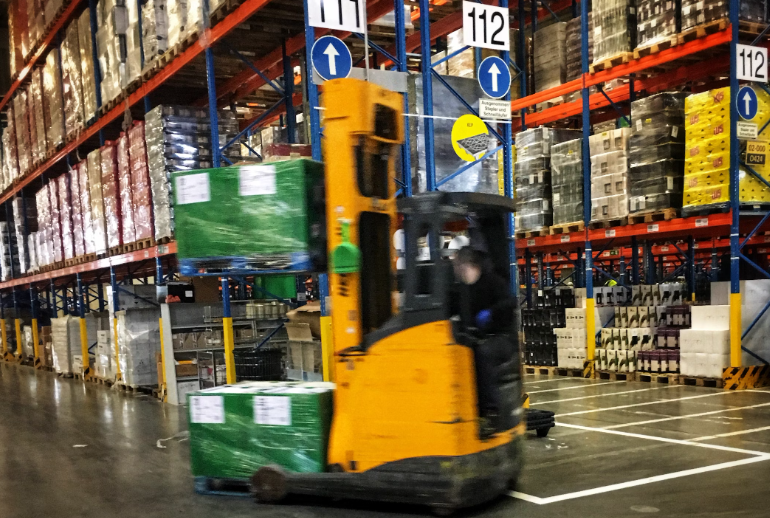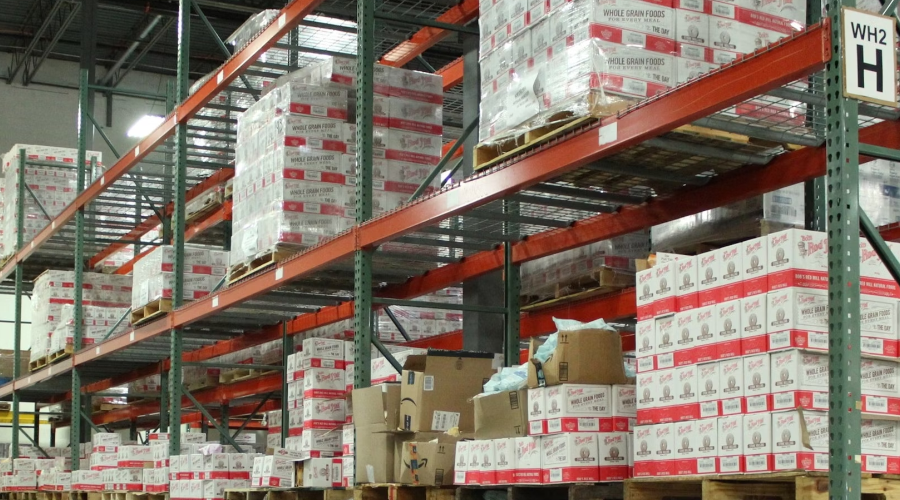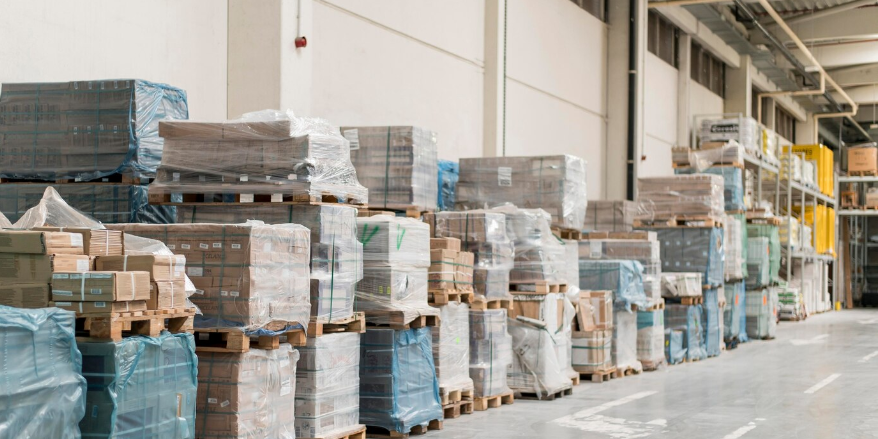Table of Contents
Get Custom eCommerce Fulfillment Service
Book a Meeting
Order Streaming Explained: The Future of Fast and Flexible Ecommerce Fulfillment
Time: Oct 29,2025 Author: SFC Source: www.sendfromchina.com
A customer clicks “buy now,” expecting their order to be on its way within hours. Behind that simple action lies a complex chain of logistics, technology, and coordination — and in today’s ecommerce landscape, that chain needs to move faster than ever.

Traditional warehouse systems, built around batch or wave processing, simply weren’t designed for this new reality. They wait, they group, they release — creating pauses in a world that no longer tolerates delay. That’s why more fulfillment centers and 3PL providers are turning to a smarter, more dynamic approach: order streaming.
Unlike conventional methods, order streaming treats every order as a live event. The moment it enters the system, it’s processed, prioritized, and routed for fulfillment — no waiting, no bottlenecks. For forward-thinking logistics partners like SendFromChina, this technology isn’t just about speed; it’s about building a more responsive, data-driven operation that adapts in real time to customer demand.
In the sections ahead, we’ll explore what order streaming really means, how it works behind the scenes, and why it’s reshaping the future of ecommerce fulfillment across the globe.
1. What Is Order Streaming
Enter the concept of order streaming, a relatively new but increasingly important paradigm in fulfillment and logistics. At its core, order streaming refers to processing and handling orders in a continuous flow, rather than in bulk batches.
Traditional order fulfilment models typically accumulate orders over a period (an hour, a few hours, a day), then release them to the warehouse for picking, packing and shipping. This is often called wave or batch processing. In contrast, order streaming shifts to a “real-time” (or near-real-time) model: as soon as an order is placed, the system treats it, processes it, and routes it through the fulfilment pipeline without waiting for other orders to group.
2. Benefits of Order Streaming
Why should e-commerce sellers and their fulfilment partners care about order streaming? The advantages (and some of the practical impacts) are substantial.

Faster fulfilment and improved customer experience
Because orders are handled immediately rather than waiting for batch-release, the delay from order placement to shipping is reduced. According to one blog:
“Instead of waiting for orders to pile up before sending them to the warehouse, this approach lets you handle each order as it comes in.” This speed translates into better service levels, which in turn feed customer satisfaction, loyalty, and brand reputation.Reduced errors and bottlenecks
Batch or wave processing often means that tasks accumulate, then are all released together — which can create peaks in labor demand, increased congestion in picking zones, and more opportunities for error. Order streaming smooths the workflow and can reduce these bottlenecks. Also, real-time monitoring of inventory and tasks allows quicker corrections of mis-allocations.
Better asset and labour utilisation
When work is released only when capacity is available (rather than pushing every order into a wave regardless of capacity), the system can optimise labour, automation, picking equipment and conveyor or sorter usage. For example, a warehouse management system (WMS) that supports order streaming can “delay task creation and assignment until the labour and/or equipment needed is available.” From a 3PL perspective, this helps control costs and meet service targets without over-staffing or leaving equipment idle.
Scalability for variable demand
E-commerce demand often fluctuates significantly (promotions, flash sales, global marketplaces, cross-border peaks). Since order streaming is inherently continuous and real-time, it supports faster scaling up or down of fulfilling capacity. A facility adopting this model can better absorb surges without complete process restructuring.
Enhanced visibility and agility
Because each order flows through the system immediately, visibility from timestamp of order to pick to pack to ship improves. This means better data for analytics, earlier detection of delays, and more agile operations. For sellers using global shipping and fulfilment via China, this visibility is invaluable (customs, international logistics, lead times).
3. How Does Order Streaming Work
Transitioning from concept to practical implementation requires clarity about how order streaming works in real-life operations, particularly within a logistics provider environment.

Order receipt and ingestion
The process begins when an order is placed by the customer (via online store, marketplace, API, etc.). In an order-streaming architecture the moment that order is accepted, it is fed into the fulfilment route. The picking and packing system does not wait until a scheduled wave or batch release.
This requires a robust order management system (OMS) and WMS (warehouse management system) integration — one that supports real-time notifications, inventory checks, and task generation.
Prioritisation and routing
Not all orders are equal. Order streaming systems typically include logic to prioritise tasks based on rules such as: shipping speed (express vs standard), destination zone, SKU availability, or customer priority. For example: a rush order to Europe might be prioritised ahead of a standard order to a domestic address.Inventory alignment and task assignment
Real-time inventory availability is critical. If an order is released immediately but the system indicates stock is not available, the process may grind to a halt or cause errors. Order streaming systems monitor and align inventory, ensuring tasks are created only when the right stock is available. This often ties into replenishment systems (ensuring pick-zones are refilled as needed) and dynamic allocation of stock across fulfilment locations.Picking, packing & shipping in flow
Once tasks are assigned, warehouse associates carry out picking and packing continuously, rather than waiting for a wave start time. Tasks may flow directly from picking to packing to shipping in a seamless chain. The advantage is lower waiting time between steps, fewer bottlenecks at each stage, and less idle time. Some systems call this “waveless” or “continuous flow” fulfilment.Monitoring, feedback & dynamic adjustment
A key differentiator of order streaming is that the system tracks the capacity of labour, equipment, conveyors/sorters, and picking zones in real time — not just at scheduled intervals. If picking stations are overloaded, the system may delay further task release, or reroute work. One description:
“The Order Streaming approach ensures real-time alignment between orders and available inventory, while constantly synchronising labour utilisation and equipment availability.” This dynamic orchestration means the fulfilment process can adjust on the fly — which is harder in traditional wave-release systemsMixed order types
In many e-commerce settings, a facility has to handle diverse order types: single-item D2C, multi-item bundles, wholesale pallets, returns, cross-border shipments, etc. Order streaming platforms enable mixed workflows: large bulk orders can still be grouped (wave), while small, urgent orders are released individually. The system dynamically handles both concurrently.
Reporting and continuous improvement
Because the system is real-time, data captured from order streaming operations (task completion times, picking rates, error rates, equipment utilisation) can feed back into optimisation loops. This enables warehousing teams to tune processes, tweak rules, and refine prioritisation logic for better performance over time.
4. The Impact of Order Streaming on the Workforce
For a logistics provider such as SendFromChina working with clients globally, it’s important to recognise that order streaming doesn’t just affect systems and equipment — it also impacts the human element: the workforce. Let’s explore the implications.

Changing labour patterns
In a batch-oriented model, warehouse associates often have scheduled waves (e.g., morning wave for orders, midday wave, afternoon wave). Work is predictable, with set shifts and a defined start-time for each wave. In order streaming, work flows continuously. That means:
Associates may have smaller, more frequent tasks rather than large wave assignments.
There may be less idle time between waves but also less “downtime” for breaks or shift changes.
Performance expectations may shift (e.g., faster turnaround per task). For management, this means planning labour differently — staffing needs may need to be more elastic, and scheduling may require more flexibility.Training and ergonomics
With continuous task release, the pressure for speed and accuracy increases. Associates will benefit from training in:
Real-time picking and packing workflows
Dynamic prioritisation (sometimes tasks may be interrupted or reprioritised)
Working with advanced picking technologies (pick-to-light, voice, mobile scanning) and slotting that supports continuous flows. Ergonomics become more important — continuous movement without “waves” may lead to fatigue if not managed carefully.Motivation and metrics
Traditional warehouse metrics (e.g., picks per hour in a wave) still apply, but in order streaming the distribution of tasks becomes more “on-demand”. Associates may have shorter task cycles, which could increase pressure to maintain throughput. Clearly defined performance metrics, incentives, and breaks will be important to maintain morale and reduce turnover. Also, because tasks may arrive unpredictably (subject to real-time demands), workforce planning needs to incorporate flexibility (temporary staff, shift overlap) especially in peaks.
Roles of supervisors & planners
In an order streaming environment, supervisors and planners become more reactive and data-driven. They’ll monitor live dashboards (task backlog, pick-zone congestion, equipment idle time) and may need to dynamically re-deploy staff or adjust priorities. This is a shift from “set the wave, release at X, review after” to “monitor continuously, adjust on-the-fly”. For a 3PL operating across time zones, this agility is important.
Workforce benefits and challenges
Benefits:
Associates may have a more steady flow of work rather than idle periods waiting for waves.
The system may better balance workloads across staff rather than overloading some and under-utilising others. Challenges:
Continuous intake may feel more demanding; without proper breaks or shift rotations fatigue may increase.
Without good technology and systems, the continuous flow could lead to congestion, mis-allocations or higher error rates.
5. How to Improve Order Streaming
If your business (or your client's business) is considering adopting or refining order streaming, here are practical steps and best-practice considerations to ensure success.

Assess current state and identify bottlenecks
Before moving to full streaming, review your current fulfilment operations:
What proportion of orders are small, single-item consumer orders vs bulk/wholesale?
Where are delays happening? (order receipt, picking, packing, shipping)
Are there peaks where current wave processing fails?
How real-time is your inventory visibility? A realistic assessment helps you decide the extent to which streaming is feasible and which workflows to convert first.Invest in the right technology stack
Order streaming demands more from your systems. Key components include:
A WMS that supports continuous task creation and dynamic prioritisation. For example, one vendor says their “order streaming” capability can process both waves and streaming orders simultaneously.
An OMS and inventory management integration so orders, stock, priorities and shipping rules are visible in real-time.
Labour / task management dashboards with live visibility of capacity and utilisation.
Automation and conveyors where appropriate to support continuous flows rather than large waves.
Analytics and reporting tools to track task flow, throughput, backlog, error rates, staffing utilisation.
Define clear rules and prioritisation logic
One of the strengths of order streaming is dynamic routing and prioritisation. But this only works if rules are well defined. Consider:
How to prioritise express vs standard shipments
Which SKUs or destinations get higher priority
Whether orders with cross-border or customs constraints are flagged
How to deal with returns or re-shipments
When to bundle orders or temporarily switch to batch for efficiency Document these rules, ensure they are embedded in your WMS/OMS, and review them regularly.Train and engage your workforce
As discussed in section 4, workforce design is critical. You’ll want to:
Train associates on streaming workflows, dynamic tasks and use of tech (scanners, voice, pick-to-light)
Ensure supervisors are equipped with dashboards and live data to act quickly
Introduce shift patterns, breaks, rotation and fatigue management appropriate for continuous workflows
Build motivation and recognition metrics around the new system — e.g., recognising good accuracy and speed in a streaming environment.
Monitor key metrics and continuously optimise
As you operate order streaming workflows, focus monitoring on metrics such as:
Order-to-ship time (how long from order receipt to shipping)
Split by order type (urgent vs standard)
Equipment and labour utilisation (are there idle zones, queues forming?)
Error rates (mis-picks, incorrect shipping labels)
Backlog or bottleneck points (packing zone congestion, shipping label generation delays) With these metrics, you can identify root-causes and refine rules, adjust staffing, or add automation. Over time you’ll build a more resilient and efficient process.Blend streaming with batch where appropriate
Streaming is not an all-or-nothing proposition. Many operations benefit from a hybrid approach: high-priority, low-volume orders » streaming; large bulk/wholesale orders » batch or wave. As one source puts it, in warehouses that handle both B2C and B2B orders, a hybrid approach is often appropriate.
For a 3PL like SendFromChina, that flexibility is a strong value proposition: you can offer fast-streaming fulfilment for D2C clients, while still handling larger shipments in batch for other clients.
For a 3PL like SendFromChina, that flexibility is a strong value proposition: you can offer fast-streaming fulfilment for D2C clients, while still handling larger shipments in batch for other clients.
Communicate value to clients
Since you’re offering third-party logistics services, you’ll want to explain to your e-commerce clients the benefits of order streaming: faster delivery, reduced errors, better visibility, and flexibility. Use case-studies or metrics to demonstrate how adopting streaming has improved operational performance. This strengthens your competitive positioning in global fulfilment from China.
6. Conclusion
Order streaming is a shift in fulfilment philosophy from batch release to continuous, real-time order flows. For e-commerce sellers and their logistics partners — such as SendFromChina — it brings significant advantages: faster fulfilment, better utilisation of assets, improved customer experience, increased agility and enhanced operational visibility.
7. FAQs
Q1. What kinds of orders benefit most from order streaming?
Streaming works especially well for small, frequent direct-to-consumer (D2C) orders where speed is a competitive advantage. Larger, predictable bulk orders may still be more efficient via batch or wave.Q2. Does order streaming require full automation in the warehouse?
No — while automation helps, the key enabler is a WMS/OMS that supports continuous task release and real-time visibility. Many operations transition gradually, starting with high-priority streams and building automation over time.Q3. Will order streaming increase labour costs?
Not necessarily — although streaming may require more flexible labour scheduling, it often improves labour and asset utilisation (less waiting, backlog, idle time). Over time the efficiency gains can offset cost risks.Q4. Can a fulfilment provider mix both order streaming and batch processing?
Yes. A hybrid model is common and often wise: streaming for urgent/small orders, batch for large/wholesale orders. The key is flexible system architecture and clear logic for routing orders.Q5. How quickly can a provider like SendFromChina implement order streaming?
Implementation time depends on current systems, volume, order types and workforce readiness. A phased approach (pilot streaming in one zone or for one client) is often most effective. The important thing is to start, measure, refine, and scale. Post Views:10
Post Views:10
Copyright statement: The copyright of this article belongs to the original author. Please indicate the source for reprinting.
Previous Post
Next Post
What Is a Wall-to-Wall Inventory Count and Why It Matters for Your Warehouse Accuracy
TAGS
Hot Research
Recent News
- Third Party Logistics Definition, Process, and Advantages
- What Is Ecommerce Fulfillment? The Definition, Process, and Benefits
- Where Does Shein Ship From
- Order Streaming Explained: The Future of Fast and Flexible Ecommerce Fulfillment
- What Is a Wall-to-Wall Inventory Count and Why It Matters for Your Warehouse Accuracy
Get Custom eCommerce Fulfillment Service
Book a Meeting
Get a Custom China Fulfillment Solution with FREE Storage for 30 Days
 Want to know about our services, fees or receive a custom quote?
Want to know about our services, fees or receive a custom quote?
 Please fill out the form on the right and we will get back to you within a business day.
Please fill out the form on the right and we will get back to you within a business day.
 The more information you provide, the better our initial response
will be.
The more information you provide, the better our initial response
will be.





 TAGS:
TAGS: